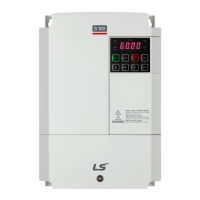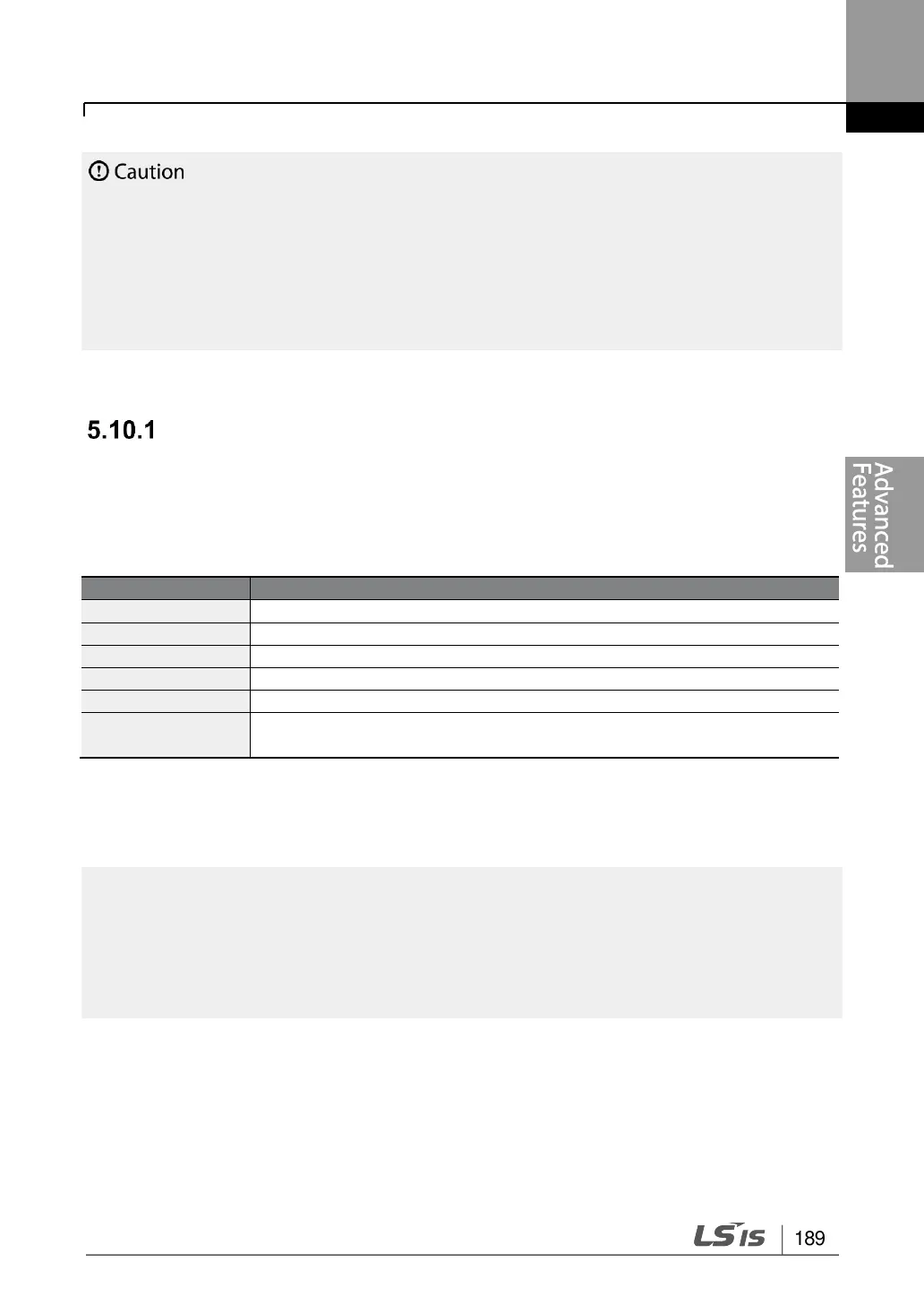Learning Advanced Features
For high-performance operation, the parameters of the motor connected to the inverter output
must be measured. Use auto tuning (bA.20 Auto Tuning) to measure the parameters before you
run sensorless vector operation. To run high-performance sensorless vector control, the inverter
and the motor must have the same capacity. If the motor capacity is smaller than the inverter
capacity by more than two levels, control may be inaccurate. In that case, change the control
mode to V/F control. When operating with sensorless vector control, do not connect multiple
motors to the inverter output.
Sensorless Vector Control Operation Setting for Induction
Motors
To run sensorless vector control operation, set dr.09 (Control Mode) to 4 (IM sensorless),
select the capacity of the motor you will use at dr.14 (Motor Capacity), and select the
appropriate codes to enter the rating plate information of the motor.
Input (Motor Rating Plate Information)
Efficiency (when no information is on the rating plate, default values are
used.)
After setting each code, set bA.20 (Auto tuning) to 1 (All - rotation type) or 2 (All - static type)
and run auto tuning. Because rotation type auto tuning is more accurate than static type
auto tuning, select 1 (All - rotation type) and run auto tuning if you can rotate the motor.
A motor can be operated only after magnetic flux is generated by current flowing through a coil.
The power supply used to generate the magnetic flux is called the excitation current. The stator
coil that is used with the inverter does not have a permanent magnetic flux, so the magnetic flux
must be generated by supplying an excitation current to the coil before operating the motor.

